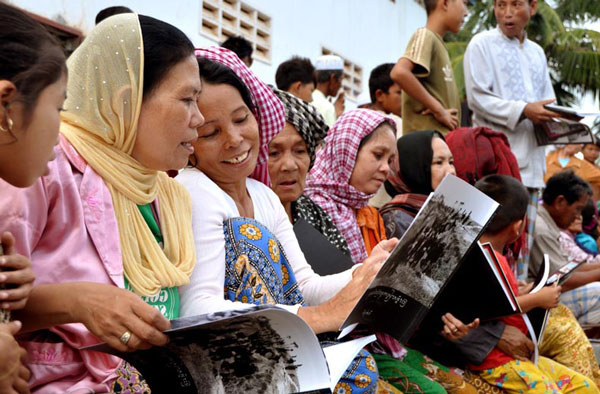Imagine your sister or brother was abducted and killed on the way home from school. Or your mother or father had been forcibly disappeared by a military death squad. You would be shocked and grief stricken; the loss would be overwhelming. And sooner or later, you would demand answers. You would want to see justice done.
But what if we were not talking about one victim but tens or hundreds of thousands—people just like our parents, our brothers and sisters, our children—brutally murdered or disappeared, subjected to untold abuses or torture, sexual or gender-based violence, or forced to flee their homes and everything they built and ever knew in terror? What if whole communities were massacred or persecuted because of their ethnicity, race, faith, gender or sexual orientation, or political affiliation? What if these communities have been systematically deprived of all their rights, including social and economic ones, and forced to live on society’s margins?
What do we mean by justice in these circumstances? How can we pursue justice if the state itself perpetrated or was complicit in violations against its own citizens? What can be done to restore the basic values of trust and respect in a system shattered by atrocities committed on an enormous scale? How does a society recover? How do we deliver justice while pursuing peace and stability?
Transitional justice refers to how societies respond to the legacies of massive and serious human rights violations. It asks some of the most difficult questions in law, politics, and the social sciences and grapples with innumerable dilemmas. While every context is unique, societies and individual stakeholders the world over must find answers to the same difficult questions about whether, when, and how to embark on a path toward a peaceful, just, and inclusive future where past crimes have been acknowledged and redressed and citizens and leaders agree that violence and human rights abuses can never again happen. The journey is a long and challenging one that requires the meaningful participation of victims together with all sectors of the society.
Above all, transitional justice is about victims. It focuses on their rights and dignity as citizens and human beings and it seeks accountability, acknowledgment, and redress for the harms they suffered. By putting victims at the center and their dignity first, transitional justice signals the way forward for a renewed social contract in which all citizens are included and everyone’s rights are protected.
Transitional justice involves people coming together to address the legacies of horrendous atrocities, or to end recurring cycles of violent conflict, by developing a range of responses. These responses may include reforms of the legal and political systems and institutions that govern a society, as well as mechanisms for uncovering the truth about what happened and why and for determining the fate of those who were detained or forcibly disappeared. They may include judicial and nonjudicial processes, such as national or international criminal prosecutions to hold perpetrators accountable. They may also include initiatives for providing reparations to victims, which can take multiple forms such as financial compensation, pensions, restitution of property or of civil and political rights, access to health care or education, and acknowledging and memorializing the victims and the abuses they suffered.
These responses, whether implemented alone or in combination, help a society transition from conflict to sustainable peace, from authoritarianism to democracy, from a legacy of mass human rights abuses to respect for human rights, and from a culture of impunity to one in which citizens are treated with dignity. They are applicable in countries still torn apart by war, in those emerging from conflict or repression, and in developed democracies dealing with unaddressed human rights violations associated with systemic racism and marginalization. These processes are not easy to implement, however, and can take years. One common challenge is how to structure or sequence the steps. Another is maintaining the initial momentum, energy, and optimism while pushing for processes that may take a long time to complete.
Transitional justice is not one thing or one process, nor is it a one-size-fits-all formula to replicate institutions. Instead, transitional justice is more like a map and network of roads that can bring you closer to where you want to go: a more peaceful, just, and inclusive society that has come to terms with its violent past and delivered justice to victims. There is no one route. Instead, different societies take different routes, depending on the nature of the atrocities that occurred and the particularities of that society, including its culture, history, legal and political structures, and capacity, as well its ethnic, religious, and socioeconomic makeup. How far along and how quickly a society travels along this path depends on the resolve, tireless effort, and collaboration of many stakeholders from government actors and politicians to victims, civil society organizations, and ordinary citizens.








